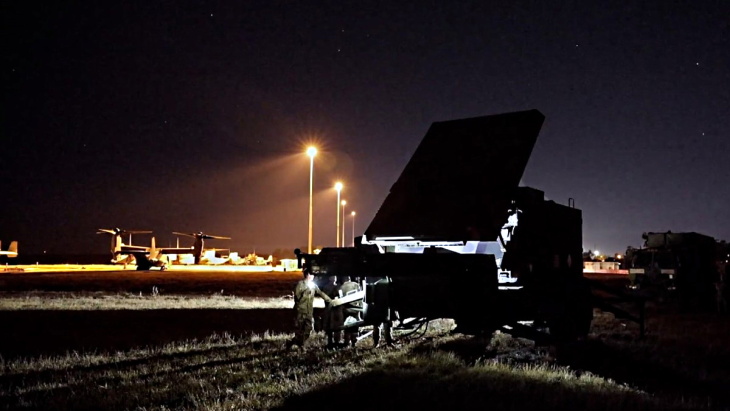The UK's Department for Business, Energy and Industrial Strategy (BEIS) has today launched two consultations on the management of radioactive waste. The consultations are on a draft national policy statement (NPS) for geological disposal infrastructure (GDF) and on Working with Communities as part of the search for a host for the GDF. Both consultations start today and run until 19 April.
Geological disposal involves placing radioactive wastes deep within a suitable rock formation where the rock formation provides long-term protection by acting as a barrier against escape of radioactivity and by isolating the waste from effects at the surface such as climate change. There is no facility currently available in the UK.
The draft NPS consultation will apply to England only. It will require parliamentary scrutiny by the BEIS select committee and could be subject to a parliamentary debate and vote. The Working with Communities consultation will apply to England and Northern Ireland. The Welsh government is conducting its own consultation in parallel with the UK government, while the Scottish government has its own policy on the management of radioactive waste.
NPS
An NPS sets out the need for particular 'nationally significant infrastructure projects' and are required, under the Planning Act 2008, to undergo a period of public consultation before they are published.
Richard Harrington, parliamentary under secretary of state at BEIS, said in the foreword to the draft NPS launched today: "Geological disposal involves placing radioactive waste in an engineered facility deep underground, keeping it away from people and the environment. It is acknowledged across the world as the best available option for dealing with radioactive waste on a long-term basis."
He added: "It is a responsible public service to our future society and will contribute to the government's Industrial Strategy, which identified the key role the nuclear sector has in increasing productivity and driving clean growth."
In 2014 the government set out a "renewed approach" to this task, he said, in its 'Implementing Geological Disposal' White Paper. With its geological disposal facility partner, Radioactive Waste Management (RWM), the government is now "working to build this wider public understanding among interested communities", he said. Building and operating a geological disposal facility is a multi-billion pound national infrastructure project, which is "likely to bring huge benefits" to its host community, he said, with skilled jobs for hundreds of people over many decades.
In July 2006, the Committee on Radioactive Waste Management (CoRWM) made recommendations for the long-term management of higher activity radioactive waste, having independently reviewed all of the available options. They recommended geological disposal, coupled with safe and secure interim storage while disposal facilities are developed, as the best available option. CoRWM also recommended that engagement with communities is essential. In 2013, they reiterated their recommendation from 2006 supporting a geological disposal facility, and that there should be a willing community to host it.
Today's draft NPS states that the UK government "remains committed" to the policy of geological disposal of higher activity radioactive waste, for the reasons set out by CoRWM 2006 and subsequent policy documents on radioactive waste management.
The RWM and the Nuclear Decommissioning Authority "continue to review" other long-term management options, it said, adding that, at present, "no credible alternatives have emerged that would accommodate all of the anticipated categories of waste in the inventory for disposal". In any realistic future scenario, some form of geological disposal facility will remain necessary, it said.
According to the document, a GDF will have both surface and underground facilities, linked by shafts or inclined tunnels. The buildings above ground will cover an area of about 1 square kilometre with the details of the layout and appearance being dependent on the features of the particular location. The underground facilities will comprise a system of vaults and engineered tunnels for the disposal of waste. A geological disposal facility will be located at a depth of between 200 and 1000 metres underground and will cover an area of about 10-20 square kilometres.
Working with Communities
The Working with Communities consultation seeks views on how communities should be engaged in a siting process for a GDF for higher activity radioactive waste, BEIS said. These views relate to how communities should be engaged, how early community investment could be provided to communities that participate in the siting process, how a right of withdrawal could operate throughout the siting process, and how a test of public support could be carried out before construction and operation of a geological disposal facility.
Harrington said: "Previous attempts to find a site for geological disposal have not been successful. This is for a variety of reasons, but above all previous approaches were not able to secure and sustain the necessary level of local support. These experiences illustrate the complexity of the challenge in working with a host community on the siting of such an important facility. The approach we are consulting on in this document builds on the lessons of previous attempts, as well as positive international examples."
He added: "We believe the best way to select a site for a geological disposal facility is in partnership with communities. International experience shows that an open and transparent site selection process that engages constructively with willing communities provides a more robust basis for success. Similar waste disposal programmes based on these key principles are making good progress in countries like Finland, Sweden and France."
The government and RWM now intend to start working to build wider public understanding among communities by progressively making information on key issues widely available and easily accessible, he said.
Industry response
The UK Nuclear Industry Association (NIA) has welcomed the launch of the consultations, agreeing that geological disposal is "the best policy for the long-term safe and secure management of radiological waste and is the solution being adopted internationally".
Pending the availability of a geological disposal facility, waste produced will continue to be stored in safe and secure facilities either at the stations themselves or at Sellafield, in northwest England, the NIA said today.
Tom Greatrex, its chief executive, added: "These consultations will provide much greater clarity on the key issues of underground storage, and effective community engagement. It will place the community at the centre of the process, as well as delivering the long-term job creation such a facility will bring."
The UK has accumulated radioactive waste from a range of activities including nuclear power generation, medicine, research and defence-related nuclear programmes. Most of the waste can be disposed of safely in facilities on the surface but a suitable facility is still needed for the remaining higher activity radioactive waste, some of which will remain hazardous for hundreds of thousands of years, the draft NPS noted. Building a geological disposal facility will also support a new generation of nuclear power plants in the UK, by providing a safe way to dispose of the waste they produce, it says.
In December, the Office for Nuclear Regulation and the Environment Agency announced that they will regulate any future GDF for radioactive waste in England and Wales. They said they will work together to ensure that any future facility meets the required high standards for environmental protection, safety, security, waste management and radioactive waste transportation.
Researched and written
by World Nuclear News





_69218.jpg)
_27928.jpg)

_76087_55556.jpg)




